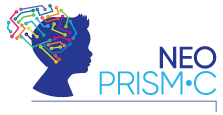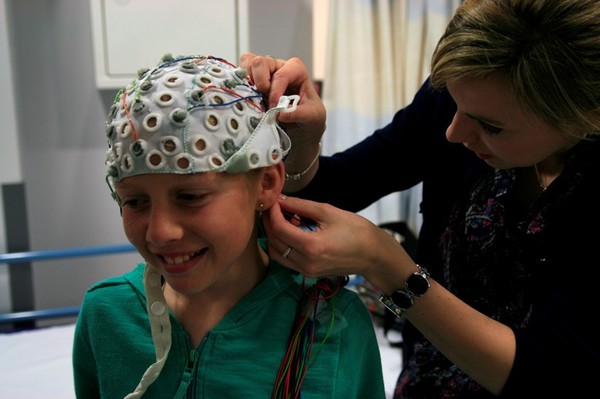Preparing for an EEG experiment is already quite tedious; from selecting the appropriate cap size up until gelling of electrodes on the scalp could take quite a lot of time, depending on a lot of factors such as the head characteristics and geometry, as well as the number of electrodes in the cap. However, this process can take even longer for child participants. How can we make this easier for the kids? How can we save time in preparation?
Here are some tips on how to make the experience tolerable and manageable for children:
1. Remind the parents to wash the child’s hair depending on the cap’s recommended setting. Some caps entail washing the hair a day before the experiment, other caps recommend washing it two days before. Consult your laboratory’s cap recommended set-up.
2. Brief the kid already of the process prior to attending the session. It would be appropriate to have a kid-friendly booklet, or a video tutorial showing the child what to expect during the session.
3. Tour the kid in the laboratory upon arrival and show him the EEG equipment so he/she can be primed on what will happen.
4. Assure the child that the EEG is non-invasive and safe, as well the electrodes will be gelled in the scalp using an electrolyte glue and a flat-pointed syringe. The process can be uncomfortable but should not be painful.
5. If you know the head size prior the experiment, prepare putting the electrodes on the cap before the participant comes. Measuring the child’s head from the nasion to inion prior to attending could help save time than preparing it when the child arrives.
6. Make sure the child is comfortable in his seat. Make sure that the eye-level is proportional to the screen, as well as the response boxes are within reach.
7. Place the headcap over the head of the child. Make sure the Cz is in the center of the head.
8. Put the electrolyte gel in the holes in the cap. Make sure to follow the impedance threshold level of your laboratory. Some EEG equipment puts gel first on the cap, whereas others put the electrodes first before gelling. Check which setup your laboratory uses.
9. Engage the child during gelling session. You can give the child some videos to watch to or initiate a conversation with them while gelling to avoid boredom.
10. Be careful with the wires of the electrodes. Make sure to plug them in the control box as you gel and turn on the box for recording. Ensure that the trigger wires are also connected.
Aside from these, make sure to remind the participants of the following:
1. Take out all electronic devices and leave them in the waiting area. EEG is very sensitive, thus signals emitted by cellphones can be recorded.
2. For parents waiting outside, be quiet during the experiment to avoid sound from leaking to the experiment room.
3. Remind the child to keep their head still and minimize unnecessary head or eye movements such as moving head sideways or blinking too much.
4. Provide frequent breaks for the child so they can rest and move.
5. Positively reinforce the child after the tasks. A verbal praise (e.g., “good job!”, “you are doing well”) can help boost their motivation.
6. Inform the child how long the experiment should be: how many blocks and briefly inform them of their progress (e.g., “Good job, you are done with two sets, two more to go!”) so they can have an idea how long they need to do the experiment.
These tips can help making the EEG recording session smoother for the child and the experimenter. However, it still depends on the experimenter’s expertise in EEG preparation as well as the child’s compliance and behavior. Don’t lose hope, as a beginning researcher, the ability to prepare the EEG gets better through practice!
Kathleen Kay Amora, Research Center for Natural Sciences, Hungarian Academy of Sciences, Hungary
For more information:
Emmerling, T. (2017, April 17). actiCAP active electrodes walkthrough. Brain Products Press Release. Retrieved January 17, 2022, from https://pressrelease.brainproducts.com/active-electrodes-walkthrough/
MSP Lab. (n.d.). BioSemi EEG System User Guide (MSP Lab). BioSemi EEG User Guide. Retrieved January 17, 2022, from https://sites.google.com/site/msplabwiki/equipment/eeg/eeg-user-guide
Amora K. K. (2021, September 24). EEG és Agykutatás: Tippek Szülőknek. Kutatók Éjszakája. Retrieved January 17, 2022, from https://app.kutatokejszakaja.hu/esemenyek/termeszettudomanyi-kutatokozpont/eeg-es-agykutatas-tippek-szuloknek






